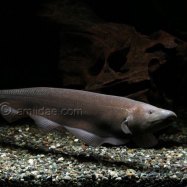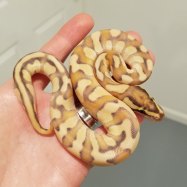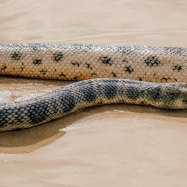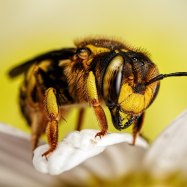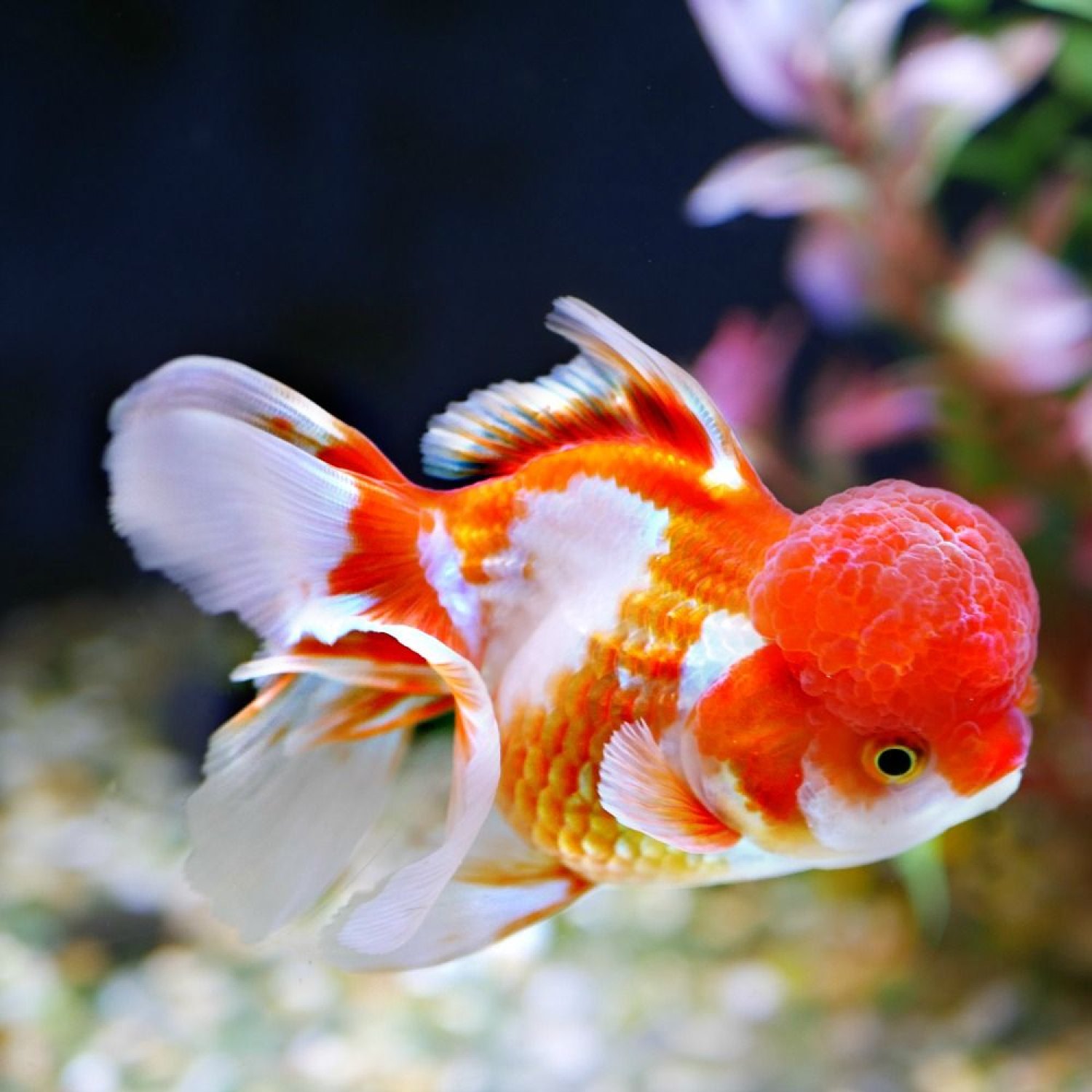
Goldfish
3 to 24 inches
Goldfish are popular pets known for their vibrant colors and peaceful demeanor. They can range in size from 3 to 24 inches and are best kept in ponds or aquariums. Belonging to the Cyprinidae family, their oval or torpedo-shaped body allows them to gracefully swim through the water. Add a goldfish to your home and experience the joy of having a beautiful and low-maintenance pet.
Animal Details Summary:
Common Name: Goldfish
Kingdom: Animalia
Habitat: Freshwater
The Little Fish with a Big Reputation: A Closer Look at the Goldfish
When we think of fish, most of us probably imagine the typical round, silver-colored creature swimming in an aquarium. However, there is one fish that stands out from the rest, with its stunning appearance and playful behavior – the goldfish. Whether you are an aquatic enthusiast or just curious about these little creatures, there's no denying that goldfish have captured the hearts of people all around the world. But what makes them so special? What makes them such a beloved household pet? Let's dive deeper into the beautiful and fascinating world of goldfish Goldfish.The Basics: What is a Goldfish?
Before we delve into the interesting facts and features of goldfish, let's first establish what exactly a goldfish is. Scientifically known as Carassius auratus, goldfish are freshwater fish from the family Cyprinidae, which also includes other well-known fish like carp and minnows. They are native to East Asia, particularly China, and have been domesticated for centuries, making them one of the oldest and most popular pets in the world.The Anatomy and Physical Characteristics of Goldfish
Goldfish are known for their vibrant and eye-catching colors, which vary from fish to fish. They can come in shades of orange, yellow, red, white, and even black. These colors are produced by pigments in their skin cells called chromatophores, which can be influenced by factors like diet, water temperature, and genetics. Interestingly, goldfish can also change their color throughout their lifetime, so you may see different shades of goldfish in your local pet store.Aside from their colors, goldfish also have distinct body shapes. They are generally oval or torpedo-shaped, with long, flowing fins Gastornis. This unique body shape and size has been a result of selective breeding for aesthetic purposes. While wild goldfish are slim and streamlined, domestic goldfish have a more round and plump appearance. They can grow anywhere from 3 to 24 inches in length, depending on the type of goldfish and its living conditions.
The Habitat and Geographic Distribution of Goldfish
As mentioned earlier, goldfish are freshwater fish, which means they are found in bodies of water like lakes, rivers, and ponds. They are also commonly kept as pets in aquariums. These fish are incredibly adaptable and can survive in a wide range of water conditions, including low oxygen levels and varying temperatures. In fact, they can even survive in frozen ponds by slowing down their metabolic rate. This adaptability has contributed to their widespread distribution globally, with populations in Asia, Europe, North America, and Australia.However, the natural habitat of goldfish is in Asia, particularly China and Japan. This is where they were first domesticated and bred for their variety of colors and sizes. In fact, China is still the top producer of goldfish, exporting millions of them to other countries each year.
The Feeding Behavior of Goldfish
Goldfish are omnivorous, which means they can eat both plants and animals. In their natural habitat, they feed on aquatic insects, small crustaceans, and plants. As a staple diet, they require a good balance of nutrients, including protein, carbohydrates, and fats. In captivity, goldfish can thrive on a commercially produced fish food, but they can also be fed with fresh vegetables like peas, zucchini, and lettuce. It's important to keep in mind that overfeeding can lead to health problems for goldfish, so it's best to feed them in controlled portions, preferably once or twice a day.Giving Goldfish a Home: Where and How to Keep Them
One of the reasons why goldfish are incredibly popular as pets is that they are relatively easy to take care of. They don't require a lot of space and can be kept in a variety of containers, such as bowls, tanks, and ponds. However, it's important to note that they can still grow quite large, so it's best to provide them with ample space for swimming and exercise. A good rule of thumb is to have at least 20 gallons of water per goldfish, and a minimum tank size of 10 gallons.When it comes to the tank setup, it's essential to provide appropriate filtration to keep the water clean and healthy for the fish. Goldfish also thrive in well-oxygenated water, so a good filtration system is crucial. They also prefer a planted tank with rocks and other decorations for hiding and exploring. Adding live aquatic plants not only provides a more natural environment for your goldfish but also helps keep the water clean and balanced.
Not Just Another Pretty Face: The Intelligence and Social Behavior of Goldfish
It's a common misconception that fish, in general, lack intelligence and social behavior. However, studies have shown that goldfish are actually quite clever animals. They have good memories, and they can even be trained to do tricks and recognize their owners. They also have a social hierarchy, where they establish dominance through various behaviors like chasing and flaring their fins. While they may not be as interactive as other pets like dogs or cats, they still have distinct personalities and can be fascinating to observe.Common Misconceptions about Goldfish
With their popularity, goldfish have also gained several misconceptions over the years. One of the most widespread misconceptions is that goldfish can survive in small containers, such as bowls. In reality, these fish require adequate space and proper filtration to thrive, and small bowls cannot provide that. Keeping them in a bowl can also stunt their growth and lead to health issues.Another common misconception is that goldfish have a short lifespan. While they do have a shorter lifespan compared to other pets, they can actually live up to 10-15 years with proper care and living conditions. In fact, the oldest recorded goldfish lived for 43 years!
Goldfish: The Perfect Addition to Your Home
In a world where we are constantly drawn to colorful and beautiful things, it's no wonder that goldfish have captured our hearts. But they are more than just striking creatures, they are intelligent, social, and fascinating animals that can make great additions to your home. With their ability to adapt to different environments and their playful behavior, they can bring joy and wonder to anyone who decides to take them in as pets.So the next time you see a goldfish swimming gracefully in an aquarium, take a moment to appreciate their unique traits and marvel at the incredible world they live in. After all, there's more to these little fish than meets the eye.

Goldfish
Animal Details Goldfish - Scientific Name: Carassius auratus
- Category: Animals G
- Scientific Name: Carassius auratus
- Common Name: Goldfish
- Kingdom: Animalia
- Phylum: Chordata
- Class: Actinopterygii
- Order: Cypriniformes
- Family: Cyprinidae
- Habitat: Freshwater
- Feeding Method: Omnivorous
- Geographical Distribution: Asia
- Country of Origin: China
- Location: Ponds and aquariums
- Animal Coloration: Varies, commonly orange, yellow, red
- Body Shape: Oval or torpedo-shaped
- Length: 3 to 24 inches
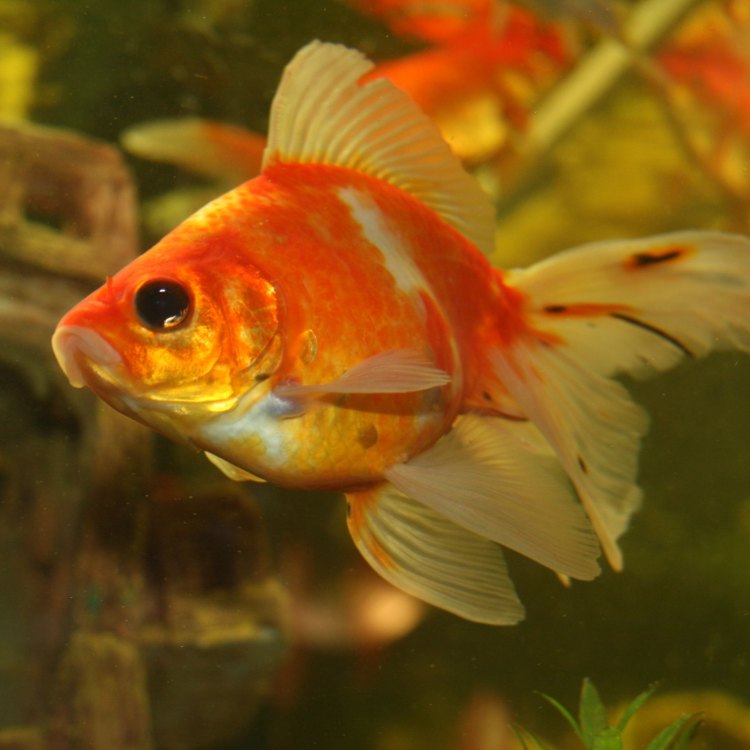
Goldfish
- Adult Size: 6 to 10 inches
- Average Lifespan: 10 to 15 years
- Reproduction: Egg-laying
- Reproductive Behavior: Spawning
- Sound or Call: Does not produce sound
- Migration Pattern: Does not migrate
- Social Groups: Can be kept in groups
- Behavior: Active and curious
- Threats: Predation, habitat degradation
- Conservation Status: Domesticated
- Impact on Ecosystem: Can negatively impact ecosystems if released into the wild
- Human Use: Ornamental fish, food
- Distinctive Features: Long fins, vibrant colors
- Interesting Facts: Goldfish have been selectively bred for thousands of years to develop their distinct shapes and colors.
- Predator: Birds, larger fish, mammals
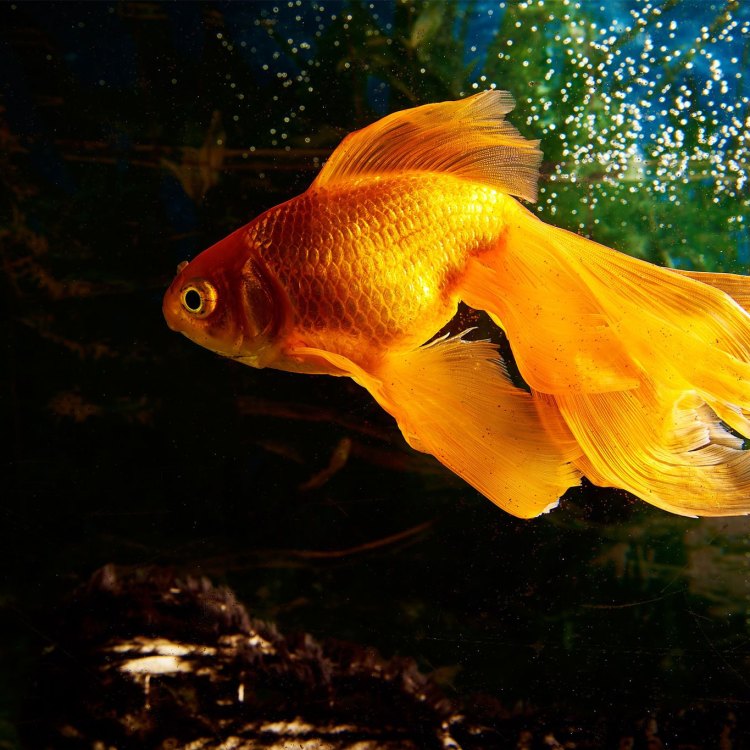
Carassius auratus
The Fascinating World of Goldfish
Goldfish have been a beloved species in the world of aquatic pets for centuries. These small, colorful fish have captured the hearts of many with their unique features and behaviors. They have been domesticated for so long that it's hard to imagine a time when they were not a part of human homes.Goldfish, scientifically known as Carassius auratus, are freshwater fish belonging to the family Cyprinidae PeaceOfAnimals.Com. They are native to East Asia and were first domesticated in China over a thousand years ago. Today, these fish are found all over the world, both in nature and as popular pets.
What makes goldfish stand out from other fish species? Let's dive into the fascinating world of these aquatic creatures and explore their distinctive features, behaviors, and impact on the ecosystem.
The Basics: Adult Size, Lifespan, and Reproduction
Goldfish are generally small fish, with an average adult size of 6 to 10 inches. However, there are some varieties of goldfish that can grow up to 18 inches in length, like the Comet goldfish. Their size is determined by factors like genetics, diet, and tank size.In captivity, goldfish can live for 10 to 15 years with proper care and a suitable environment. However, in the wild, they can live for up to 25 years. The oldest recorded goldfish was 43 years old!
When it comes to reproduction, goldfish are egg-layers, meaning they lay eggs instead of giving birth to live young Grass Spider. This is a crucial distinguishing feature from other types of fish, such as guppies or angelfish, which are live-bearers.
Reproductive Behavior: Spawning
Goldfish reproduce through spawning, a process where the female releases unfertilized eggs into the water, and the male fertilizes them with his sperm. This usually occurs in the warmer months, as goldfish are sensitive to temperature and need warm water to spawn successfully.In the wild, goldfish generally spawn in shallow, vegetated areas. In captivity, owners can simulate this environment by providing plants or spawning mops in the tank. The male goldfish will then chase the female, nudging her belly to encourage her to release the eggs. The eggs stick to the plants or spawning mop, and the male fertilizes them.
After spawning, the eggs hatch within 4 to 7 days, depending on the water temperature. The fry (baby goldfish) start swimming and feeding on their own after about a week. It is crucial to separate the fry from the parents, as they may eat their young. It is also essential to provide proper nutrition and a clean environment for the fry to grow and thrive.
All About Behavior: A Social and Active Species
Goldfish are social creatures and can be kept in groups. In the wild, they form schools to protect themselves from predators. However, in captivity, they may show aggression towards one another due to limited space and resources.Compared to other types of fish, goldfish are known for their active and curious behavior. They are constantly moving and exploring their surroundings, making them a delight to watch in a fish tank. They are also quite intelligent and can be trained to recognize their owners, respond to feeding cues, and even do tricks.
One interesting behavior of goldfish is their sensitivity to sound. While they do not produce any sound themselves, they can hear certain frequencies and vibrations. This is why it is recommended to keep the tank in a quiet and peaceful area to avoid stressing them out.
Threats to Goldfish: Predation and Habitat Degradation
As with any species, goldfish are susceptible to threats in their natural environment. In the wild, they face predation from birds, larger fish, and mammals. This is why they tend to stay in schools and have a strong instinct to hide when they sense danger.In recent years, goldfish populations in the wild have also been affected by habitat degradation. The introduction of non-native species, pollution, and changes in water temperature are all contributing factors to the decline of wild goldfish populations.
The best way to protect goldfish in their natural habitat is by preserving their ecosystems and not releasing them into the wild. Unfortunately, many people believe that releasing their goldfish into local water bodies is the humane thing to do when they can no longer care for them. However, this can have severe consequences for the local ecosystem.
The Impact on Ecosystems: A Case for Responsible Pet Ownership
Goldfish may seem like harmless pets, but when released into the wild, they can have a negative impact on local ecosystems. This is because they are a non-native species and can outcompete native fish for resources and disrupt the balance of the ecosystem.A prime example of this is the situation in Vasse River, Australia, where goldfish released into the river have bred rapidly, resulting in the decline of native species and the destruction of aquatic vegetation. It is estimated that there are over 5,000 goldfish in the river, and they are nearly impossible to eradicate.
This serves as a reminder to be responsible pet owners and never release goldfish into the wild. Instead, proper care and rehoming options should be sought when necessary.
Human Use: From Ornamental Fish to Food
The history of goldfish and humans goes back centuries. In China, where goldfish were first domesticated, they were considered a symbol of wealth and prosperity. Over time, they became popular as ornamental fish and were selectively bred to produce different shapes, patterns, and colors.Today, goldfish are one of the most common household pets, often kept in fish tanks or outdoor ponds. However, in some parts of the world, they are also used as a food source. In Asian countries like Thailand and Japan, deep-fried goldfish is a delicacy served at restaurants and street food stalls.
While most people may cringe at the thought of eating a beloved pet, it is important to remember that cultural beliefs and practices differ around the world. In some regions, goldfish are simply seen as a type of fish used for food, just like salmon or tilapia.
Distinctive Features: Long Fins and Vibrant Colors
When we think of goldfish, the first things that come to mind are their long, flowing fins and vibrant colors. These features are a result of selective breeding done over thousands of years to develop different varieties of goldfish.Some of the most popular types of goldfish are the Comet, Fantail, and Shubunkin. Comets are known for their long, comet-shaped tails, while Fantails have two luscious fins that resemble a butterfly's wings. Shubunkins have a mix of scales in various colors, giving them a unique spotted appearance.
Goldfish come in a range of colors, from orange and red to black, white, and even calico. This diversity in color is due to the genetic makeup of each fish and can also be influenced by the environment they are raised in.
Interesting Facts: Selective Breeding and Predator Avoidance
One of the most fascinating things about goldfish is their history of selective breeding. Goldfish have been domesticated for over a thousand years, and through careful breeding practices, humans have created hundreds of varieties of these fish. This includes the famous Bubble Eye goldfish, which has large fluid-filled sacs on either side of its head.Another interesting fact about goldfish is their ability to avoid predators. In the wild, goldfish have developed a strategy where they play dead to confuse predators. They can also change their color to match their surroundings, making it harder for predators to spot them.
Conclusion
Goldfish may seem like simple pets, but they are a species with a rich and fascinating history. From their selective breeding to their unique behaviors and role in ecosystems, these small fish have captured the attention of many.However, it is essential to remember that goldfish are living creatures that require proper care and responsible ownership. Whether kept as ornamental fish or used as a food source, we must prioritize their well-being, both in captivity and in the wild.
So next time you see a goldfish swimming gracefully in a tank, take a moment to appreciate the complexity and beauty of this species that has been a part of our lives for centuries.
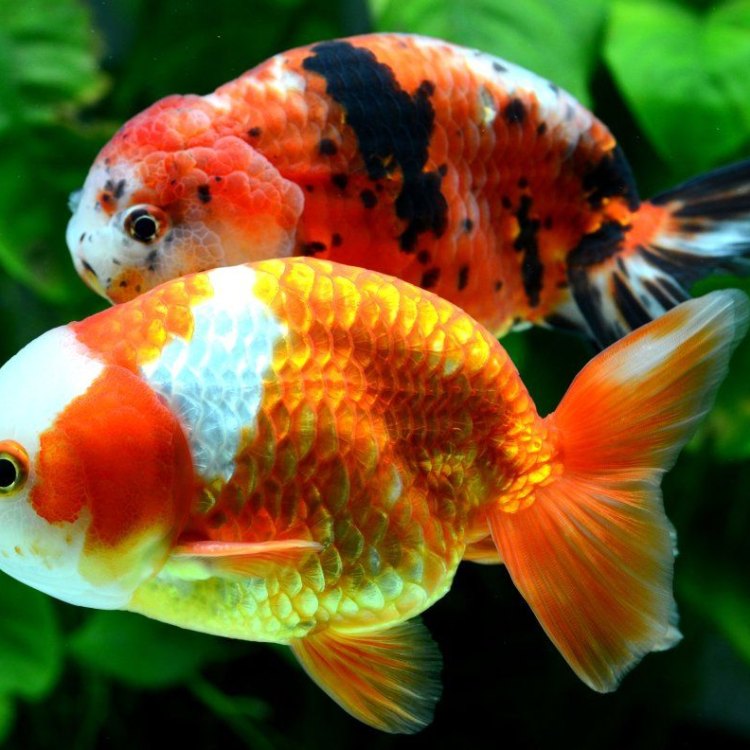
The Little Fish with a Big Reputation: A Closer Look at the Goldfish
Disclaimer: The content provided is for informational purposes only. We cannot guarantee the accuracy of the information on this page 100%. All information provided here may change without prior notice.




